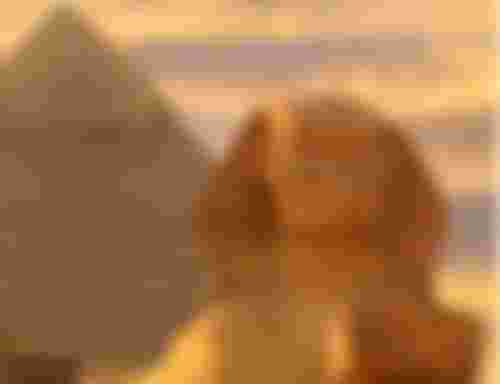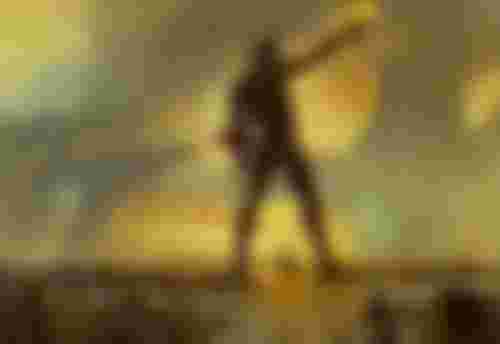You often know what the Seven Wonders of the World are today, but do you know the Seven Wonders of the Ancient World? And why was it only seven? Is there anything that connects them together? Can we somehow relate these astonishing architectural accomplishments to an ancient travel guide?
What are the seven wonders of the world?
These wonders include a pyramid, a mausoleum, a temple, two statues, a lighthouse, and an almost mythical garden. The Great Pyramid of Giza in Egypt, the Mausoleum of Halicarnassus in Turkey, the Temple of Artemis in Turkey, the Statue of Zeus in Greece, the Colossus of Rhodes in Greece, the Lighthouse of Alexandria in Egypt, and the Hanging Gardens of Babylon in Iraq.
Why the Seven Wonders of the World, only seven?
But why is it only seven? Although there were many buildings and statues in the ancient world deserving of being on this list, there were only seven wonders always.
The Greeks chose this number because they believed it had spiritual value and represented perfection. This number may be the number of the five planets known at that time, in addition to the sun and moon. The other question is about the Seven Wonders of the World, given that all wonders except one were lost or destroyed long ago, what exactly are these wonders?
1- The Great Pyramid of Giza
The Great Pyramid of Giza still stands tall in Egypt.

The pyramid was built in 2500 BC, as a tomb for Pharaoh Khufu of the Fourth Dynasty, and it is the largest of the three pyramids of Giza. Its original height is 146.5 meters, which made the pyramid the tallest man-made structure in the world, until Lincoln Cathedral surpassed it in the fourteenth century. The outer layer of limestone has eroded through time, reducing nearly eight meters from its height, but the pyramid remains one of the most extraordinary monuments on the planet. Recent estimates indicate that it took about 14 years to construct it to transport and install 2.3 million stone blocks.
2- Mausoleum of Halicarnassus
It is said that Artemisia (also Mausolus' wife and sister) was so mourned by the death of her husband that she mixed his ashes with water and drank it, before overseeing the construction of his luxurious tomb. The colossal structure of white marble was founded on a hill overlooking the capital built by the late king.

The two Greek architects Pythios and Satyros designed the building in three floors, combining Lycian, Greek and Egyptian architectural styles. The lowest floor is about 20 meters high, forming a base of stairs leading to the second floor, and is surrounded by 36 columns. The roof was in the shape of a pyramid, surmounted by a sculpture of a four-horse chariot, raising the tomb to about 41 meters. Four of the most famous Greek artists sculpted statues and other decorations surrounding the tomb, each of which adorned one of its sides.
Earthquakes may have caused the destruction of the tomb during the Middle Ages, but a part of it is still standing today, indicating the greatness of Mausolus' final resting place, and from his name came the word "mausoleum", which came to refer to the huge shrines.
3- Statue of Zeus
Olympia, the sacred place in ancient Greece, site of the First Olympic Games, is the home of a wonder. Is there a better way to show homage to the main god of the ancient Greeks than to build a giant statue of him? This is what the sculptor Phidias did when he erected his masterpiece in the Temple of Zeus in Olympia, around 435 BC.

Zeus sat resplendently on a throne made of cedar and decorated with gold, ivory, ebony and precious stones. The god of thunder carried a statue of Nike, the goddess of victory, in his outstretched right hand, and a scepter surmounted by an eagle in his left. Gold and ivory decorations were added to it, which meant that temple priests had to regularly oil the statue to protect it from the hot and humid weather in western Greece. The size of the statue was huge, about 12 meters long, to the extent that it was barely possible to install it inside the temple.
But Zeus was lost in the end, perhaps it happened with the destruction of the temple in 426 AD, or it was burned after its transfer to Constantinople.
4- Hanging Gardens of Babylon
Detailed descriptions of the Hanging Gardens of Babylon are found in many ancient texts, whether Greek or Roman, but there is no other wonder that matches its mystery, as all testimonies about it are cited from others, and there is no conclusive evidence of its existence at all. If the gardens are real, they signify a level of premature engineering skill, because maintaining a lush and thriving garden in Iraq's present-day deserts has not been an easy task.

One theory says that the Babylonian king Nebuchadnezzar II created the Hanging Gardens in 600 BC, to help his wife, who was nostalgic for the plantations of her hometown in the region of Medea (present-day Iran).
The Greek scholar Philo of Byzantine explains the process of irrigation of gardens: “Aqueducts contain running water from high places. On one hand they allow the stream to flow down the slopes in a straight line, and on the other hand they push it upward, and in the opposite direction, by means of screw tools,” including An early version of "Archimedes' screw."
Some scholars believe that the Hanging Gardens did exist, but not in Babylon. Dr. Stephanie Daly of the University of Oxford claimed that the gardens and their watering system were made by the Assyrian King Sennacherib for his palace in Nineveh, 300 miles north on the Tigris River.
5- Lighthouse of Alexandria
The boats sailing to the port of Alexandria had difficulty access due to the shallow water and rocks. There was a need to find a solution for the prosperous port on the coast of Egypt in the Mediterranean, which was founded by Alexander the Great in 331 BC, from which the city took the name. The solution came in the form of a lighthouse on the nearby island of Pharos.

The height of the lighthouse is thought to be just under 140 meters, making it the second tallest man-made building in ancient times after the Great Pyramid of Giza. The tower was divided into a square base, topped by an octagonal piece with a cylindrical shape at the top, all connected by a spiral ramp so that fire could be lit at the top.
The Greek poet Possidius described the scene: “This tower appears, in a straight, vertical line, cutting through the sky from an incalculable distance ... All night long, the seas in the waves will see a great fire from its summit.” This design became the model for all lighthouses since then. Like some of the other Seven Wonders, the lighthouse has been a victim of earthquakes.
6- Temple of Artemis

The temple had a difficult and violent history, so much so that there were actually several temples, built one after the other in Ephesus, in present-day Turkey. The miracle was destroyed over and over again, once by a flood in the seventh century BC, and in 356 BC he was burned by a person called Herostratus, hoping to achieve fame by any means, and in the third century it was destroyed in a raid by the East Germanic Goths. The final destruction of the temple came in 401 AD, and only a few parts of it remain in the British Museum.
7- The Colossus of Rhodes
The Colossus of Rhodes was erected in 282 BC, and was the last wonder built, and one of the first to be destroyed. It has lasted for less than 60 years, but that has not made it off the list of wonders.

The statue of Helios overlooks the port at a height of 70 cubits, about 32 meters, and may have carried a torch or spear. Some descriptions depict him opening his legs over the harbor entrance, allowing ships to sail through them, but this was impossible with the casting techniques of the time.
Legend has it that the people of Rhodes sold tools left by their defeated opponent to help pay for the gigantic statue, melted the abandoned weapons to make the Iron Bronze Pylon, and used one of the siege towers as a scaffold.
The giant statue was not strong enough to withstand the earthquake of 226 BC, and it shattered to pieces on the ground







I really like this article . Thanks for sharing Support me back please!!